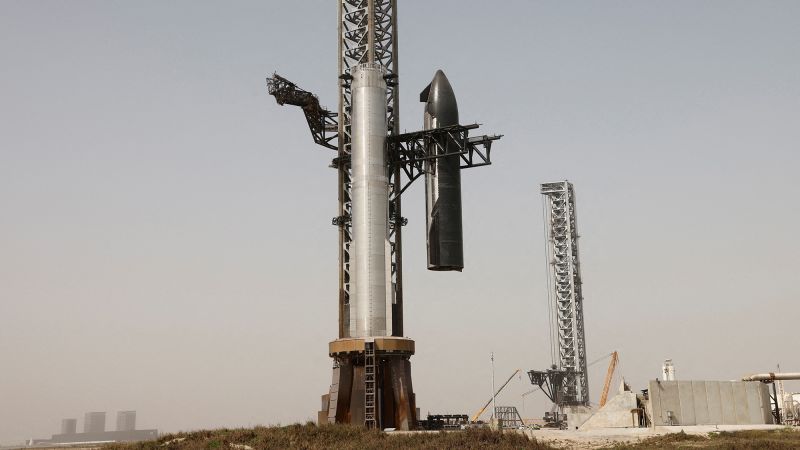On Thursday night, SpaceX initiated the eighth test flight of its colossal Starship megarocket system, aiming to gather valuable data and test the resilience of the spacecraft. This launch took place at 5:30 p.m. CT (6:30 p.m. ET) from the SpaceX Starbase in South Texas after a prior launch attempt was scrapped due to uncertainties raised by CEO Elon Musk. Unfortunately, like its predecessor, the seventh flight, this mission also ended in the loss of the Starship vehicle.
Despite the setback with the Starship, SpaceX successfully landed the Super Heavy booster using the “chopstick” mechanism of the launch tower, affectionately dubbed “Mechazilla,” marking the third successful catch of a Super Heavy booster. This monumental feat underscores SpaceX’s progress in mastering rocket retrieval technology, providing a silver lining amid the complexity of the mission.
The Starship spacecraft, recognized as the upper stage, was hoisted by the towering 232-foot (71-meter) Super Heavy rocket. The separation of the booster from Starship occurred approximately 2.5 minutes post-launch, designed to stress-test the structures and systems before ascending into a planned suborbital trajectory. Unfortunately, SpaceX lost contact with the spacecraft around 20 seconds from the conclusion of its ascent burn, at which point several of its engines had visibly failed as seen during the live broadcast.
Dan Huot from SpaceX explained that the loss of several center engines led to the ship losing control, which caused it to enter into an uncontrollable spin. The loss of contact occurred at a critical point, reminiscent of the earlier Flight 7 incident, which resulted in a fiery explosion that scattered debris across the Turks and Caicos Islands, affecting not only the trajectory of the spacecraft but also causing damage on the ground.
This time, however, it was uncertain exactly where the explosion occurred. As a precaution, the Federal Aviation Administration (FAA) instituted temporary flight restrictions over Miami, Fort Lauderdale, Palm Beach, and Orlando airports, stating that the circumstances warranted safety measures against potential falling space debris.
Huot emphasized that meticulous protocols were in place to ensure public safety prior to the launch. The FAA confirmed that it was coordinating closely with air traffic control to manage flights effectively in the area. Following the loss of contact, SpaceX communicated via X, formerly known as Twitter, that the vehicle experienced an “unscheduled disassembly” that led to the mission’s abrupt end.
The objectives for this test flight mirrored those of the previous attempts, including the intent to reignite one of the Starship engines in space, essential data points that could lend insights for future missions. Following the loss of signal at a similar moment to Flight 7, all eyes were on how SpaceX would respond moving forward.
Despite the loss, the engineering team has been hard at work making enhancements based on previous test flights. Measures have included the installation of new heat shield materials designed to withstand temperatures surpassing 2,600 degrees Fahrenheit upon re-entry into Earth’s atmosphere. SpaceX has been experimenting with various tiles, including a newer metallic one that incorporates active cooling features, to evaluate their effectiveness in safeguarding the spacecraft.
Moreover, significant upgrades have been made to both Starship and Super Heavy systems. Starship’s structure is now slightly larger, standing 6.5 feet taller and boasting a 25% increase in propellant capacity, potentially extending its flight duration. With the Super Heavy now equipped with a stronger flight computer and the reworked design of its forward flaps, the layers of improvements reflect SpaceX’s commitment to development and safety.
Given the change in focus toward maximizing future missions, SpaceX’s recent announcement of a new facility named Gigabay at NASA’s Kennedy Space Center in Florida marks a strategic expansion, aiming to increase the production capacity for both Starship vehicles and associated operations.
The road to developing a robust and reliable spacecraft is fraught with challenges, as highlighted by the difficulties encountered during this eighth flight test. SpaceX’s journey illustrates the iterative nature of aerospace innovation—each setback serves as an opportunity to learn and improve, paving the way for safer, more reliable missions in the unfolding era of space travel.












